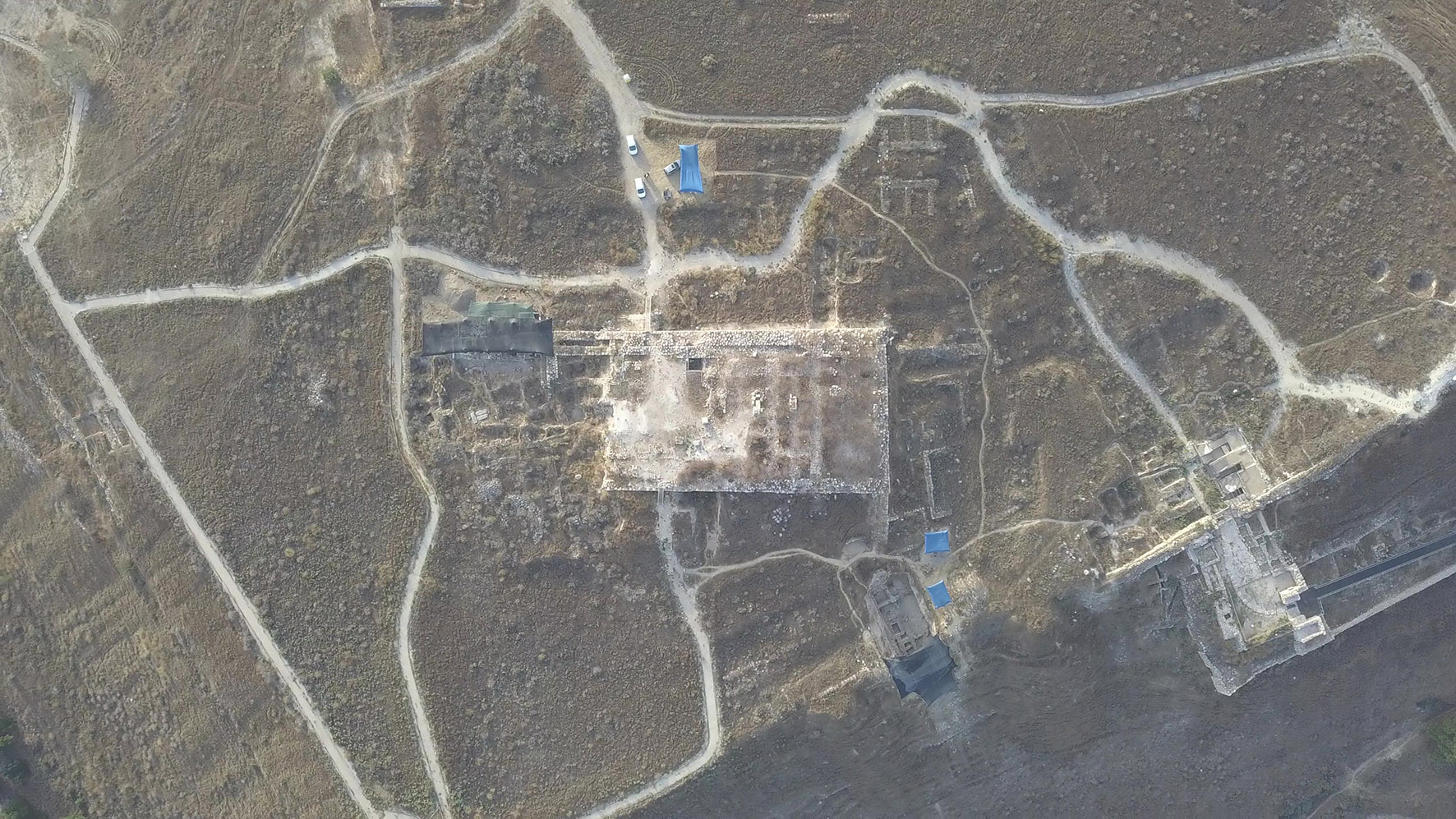Tracing Transformations in the Southern Levant: From Collapse to Consolidation in the Mid-second Millennium BC
»Tracing transformations« explores the history and archaeology of the Late Middle and Early Late Bronze Age in the southern Levant. This period saw the demise of the Middle Bronze Age city-states, the end of the Hyksos Empire in Egypt, and the rising interest and involvement of the Pharaohs in the Levant, culminating in the military campaigns of the Thutmosid period and leading eventually to the ›International Age‹ of the Late Bronze Age Amarna Period.
»Tracing Transformations« sheds new light on this formative period by (1) a targeted excavation of Late Middle and Early Late Bronze Age settlement layers at Tel Lachish, (2) establishing an absolute chronology for the Late Middle and Early Late Bronze Age based on sequences of radiocarbon dates that can be correlated with the radiocarbon-backed New Kingdom chronology of Egypt, and (3) a new historical assessment of the period based on the new chronological framework, and a critical study of the available textual and archaeological sources.

The Austrian Expedition to Lachish
»Tracing Transformations« continues excavations at Area S and Area P at Tel Lachish. Area S is a trench on the western edge of the site and was originally excavated by the University of Tel Aviv’s expedition directed by David Ussishkin. This area features settlement layers of the Late Bronze Age and serves as a case study for this crucial period of southern Levantine archaeology. Area P is located north of the Judean Palace, under Iron Age and Late Bronze Age layers, David Ussishkin uncovered part of a Middle Bronze Age palace, which »Tracing Transformations« is currently continuing excavating. The Tel Lachish excavations are directed by Katharina Streit and Felix Höflmayer.
A Radiocarbon Chronology for the Late Bronze Age
An absolute chronology will be established based on a sequence of new and contextualized high-precision radiocarbon measurements from Lachish and other sites in the southern Levant that can be correlated with the radiocarbon-backed historical chronology of Egypt. In order to establish a sound absolute chronology »Tracing Transformations« will acquire a sequence of stratified short-lived botanical samples (ideally single-year cultigens) from the excavations of Area S at Lachish and other sites. The radiocarbon dating sub-project is led by Lyndelle Webster, radiocarbon measurements are done in cooperation with Michael W. Dee of the University of Groningen.

Historical Synthesis
Nowadays, the cultural and historical development of the Late Bronze Age southern Levant is usually seen through the lens of Egyptian history. Egyptian texts have often been taken at face value, especially in regard of the Late Bronze Age of the southern Levant. This wealth of textual material has led to overwhelmingly text-based historical reconstructions, but archaeological data is needed to counter-balance the inescapably one-sided picture of the textual sources. The archaeological evidence has to be fully acknowledged for this new assessment of the beginning Late Bronze Age. »Tracing Transformations« combines a critical historical study with an up-to-date assessment of the archaeological data backed by a high-precision radiocarbon chronology. Only this combination offers the possibility to assess and understand historical trajectories of the formative period of the »International Age« of the Late Bronze Age.
Publications
Publications
- F. Höflmayer – H. Misgav – L. Webster – K. Streit, Early Alphabetic Writing in the Ancient Near East: The ‘Missing Link’ from Tel Lachish. Antiquity, Bd. 95 (381), 2021, 705-719.
- S. Vermeersch – S. Riehl – B. M. Starkovich – K. Streit – F. Höflmayer, Animal Husbandry from the Middle Bronze Age through the Iron Age in the Shephelah – Faunal Remains from the New Excavations at Lachish, Archaeological and Anthropological Sciences 13, 2021, 38. doi: 10.1007/s12520-021-01289-1
- F. Höflmayer, Tel Nami, Cyprus, and Egypt: Radiocarbon Dates and Early Middle Bronze Age Chronology, Palestine Exploration Quarterly, 2021. doi: 10.1080/00310328.2020.1866329
- P. L. Fall – S. E. Falconer – F. Höflmayer, New Bayesian Radiocarbon Models for Early Bronze IV Tell Abu en-Ni'aj and Middle Bronze Age Tell el-Hayyat, Jordan, Radiocarbon 63(1), 2020, 41–76. doi: 10.1017/RDC.2020.104
- L. Webster – K. Streit – M. W. Dee – I. Hajdas – F. Höflmayer, New Radiocarbon-Based Assessment Supports the Prominence of Tel Lachish during the Late Bronze Age IB-IIA, Radiocarbon 61(6), 2019, 1711–1727. doi: 10.1017/RDC.2019.131
- F. Höflmayer, The Expulsion of the Hyksos and the End of the Middle Bronze Age: A Reassessment in Light of Recent Chronological Research, Journal of Ancient Egyptian Interconnections 21, 2019, 20–30.
- L. Webster – K. Streit – M. W. Dee – I. Hajdas – F. Höflmayer, Identifying the Lachish of Papyrus Hermitage 1116A Verso and the Amarna Letters: Implications of New Radiocarbon Dating, Journal of Ancient Egyptian Interconnections 21, 2019, 88–99.
- K. Streit – L. Webster – V. Becker – A.-K. Jeske – H. Misgav – F. Höflmayer, Between Destruction and Diplomacy in Canaan: The Austro-Israeli Expedition to Tel Lachish, Near Eastern Archaeology 81(4), 2018, 259–268.
- F. Höflmayer, An Early Date for Khyan and Its Implications for Eastern Mediterranean Chronologies, in: I. Forstner-Müller – N. Moeller (eds.), The Hyksos Ruler Khyan and the Early Second Intermediate Period in Egypt: Problems and Priorities of Current Research. Proceedings of the Workshop of the Austrian Archaeological Institute and the Oriental Institute of the University of Chicago, Vienna, July 4–5, 2014, Ergänzungsheft zu den Jahresheften des Österreichischen Archäologischen Institutes in Wien 17 (Wien 2018) 143–171.
- F. Höflmayer, A Radiocarbon Chronology for the Middle Bronze Age Southern Levant, Journal of Ancient Egyptian Interconnections 13, 2017, 20–33.
Projektleitung
Cooperations
- Israel Antiquities Authority
- Israel Nature and Parks Authority
- Universität Groningen
- Universität Tübingen
- W.F. Albright Institute of Archaeological Research
